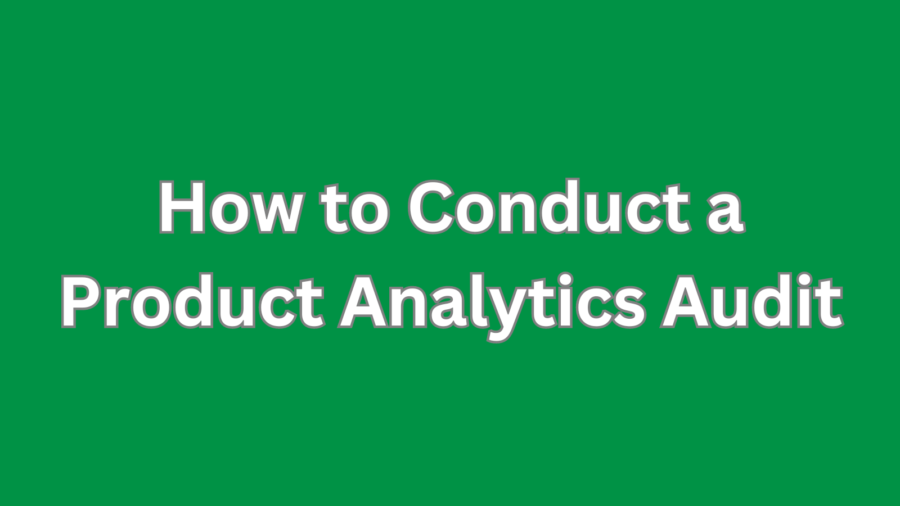Introduction
Actionable metrics have emerged as indispensable tools for driving success. Often referred to as key performance indicators (KPIs), these metrics serve as the backbone of informed decision-making, shaping the trajectory of businesses across industries. From tracking sales and marketing effectiveness to optimizing operational efficiency, actionable metrics offer invaluable insights that can make or break a company’s competitive edge.
In this article, we’ll explore various actionable metrics examples that highlight their crucial role in different areas of business operations. By examining how these metrics contribute to strategic decision-making, we’ll underscore their significance in identifying growth opportunities and potential challenges. Whether you’re a seasoned entrepreneur or a budding startup, understanding the power of actionable metrics is key to staying ahead in today’s fiercely competitive market.
Actionable Metrics in Marketing
Understanding the nuances of marketing performance is crucial for any business striving to thrive in today’s competitive landscape. Actionable metrics in marketing serve as the compass guiding companies toward their goals, enabling them to make data-driven decisions and optimize their strategies for maximum impact. These metrics, ranging from conversion rates and customer acquisition costs to customer lifetime value and return on investment, offer a comprehensive view of marketing efficacy, revealing where resources are best allocated and what areas need improvement. By honing in on these key performance indicators (KPIs), businesses can unlock invaluable insights into consumer behavior, market trends, and the effectiveness of their marketing campaigns, ultimately leading to more targeted and successful marketing efforts.
In digital marketing, actionable metrics play an even more critical role, given the vast array of data available at marketers’ fingertips. Metrics such as website traffic, click-through rates, and engagement rates across various digital platforms provide marketers with a deep understanding of their audience’s preferences and behaviors, enabling them to tailor their strategies accordingly. With the aid of these digital metrics, businesses can not only gauge the success of their online campaigns but also adapt quickly to changes in consumer behavior and market trends, ensuring that their marketing efforts remain relevant and effective in an ever-evolving digital landscape.
- Website Traffic as an Actionable Metric: One of the fundamental, actionable metrics in marketing is website traffic. It is a barometer of your online presence and provides crucial insights into audience engagement. By tracking website traffic, you can discern which marketing channels are most effective in driving visitors to your site, allowing you to adjust your strategies accordingly.
- Conversion Rate: Turning Data into Action: The conversion rate is a prime example of an actionable metric in marketing. It measures the percentage of website visitors who take a desired action, such as purchasing or signing up for a newsletter. A high conversion rate indicates successful marketing efforts, while a low one signals room for improvement.
- Click-Through Rate (CTR) and Actionable Insights: Email marketers are acutely aware of the significance of Click-Through Rate (CTR) as an actionable metric. It precisely gauges the effectiveness of email campaigns by revealing the percentage of recipients who actively engage with your content. Analyzing CTR empowers you to refine your email content and tailor it to your audience’s preferences.
- Cost Per Click (CPC) and Resource Allocation: Managing marketing budgets efficiently hinges on actionable metrics like Cost Per Click (CPC). This metric calculates the average cost of each click on your paid advertising campaigns. By closely monitoring CPC, you can allocate resources strategically and optimize your ad spend for the best return on investment.
- Customer Acquisition Cost (CAC): Customer Acquisition Cost (CAC) is a quintessential actionable metric that quantifies the expenses of acquiring new customers through various marketing channels. Keeping a keen eye on CAC helps you channel your marketing budget where it matters most, ensuring efficient customer acquisition strategies.
- Customer Lifetime Value (CLTV): Customer Lifetime Value (CLTV) provides a long-term perspective as an actionable metric. It estimates the total revenue a customer is expected to generate over their relationship with your business. Armed with this data, you can tailor your marketing and retention strategies, maximizing the value of each customer over time.
- Social Media Engagement for Informed Action: Social media platforms offer a wealth of actionable metrics. Metrics such as likes, shares, comments, and other interactions provide invaluable insights into audience engagement. Monitoring these metrics empowers you to adapt your content and engagement strategies for optimal results.
Actionable Metrics in Sales
Effectively utilizing actionable metrics has become a game-changer for businesses seeking to maximize their revenue streams and optimize their performance. Actionable metrics in sales encompass a range of quantifiable data points that provide valuable insights into the effectiveness of a company’s sales strategies and initiatives. From tracking conversion rates and customer acquisition costs to monitoring sales pipeline velocity and customer lifetime value (CLV), these metrics offer a comprehensive overview of a company’s sales performance, enabling businesses to make informed decisions and refine their sales approaches.
Understanding the significance of actionable metrics in sales is paramount for businesses aiming to enhance their sales processes and drive sustainable growth. By leveraging these metrics, sales teams can gain a deeper understanding of their customers’ preferences and behaviors, identify potential bottlenecks in the sales funnel, and proactively address challenges in meeting sales targets. With the right set of actionable metrics in place, businesses can not only streamline their sales operations but also adapt their strategies to meet the evolving demands of the market, ultimately leading to improved customer satisfaction and increased revenue generation.
- Monthly Sales Growth as a Driver of Action: Monthly Sales Growth is an actionable metric that keeps a finger on the pulse of your sales performance. By comparing monthly sales figures, you can spot trends, identify peak seasons, and allocate resources effectively to capitalize on opportunities.
- Sales Conversion Rate: Powering Sales Strategies: The Sales Conversion Rate is a metric that drives action within sales teams. It measures the percentage of leads or prospects that convert into paying customers. A high conversion rate suggests effective sales processes, while a lower rate prompts the need for adjustments.
- Average Order Value (AOV) for Revenue Enhancement: Average Order Value (AOV) calculates the average amount customers spend per transaction. Monitoring AOV is instrumental in enhancing revenue, as it guides cross-selling and upselling strategies, encouraging customers to spend more with each purchase.
- Sales Pipeline Velocity: Speeding Up Success: Sales Pipeline Velocity measures the speed at which leads progress through your sales pipeline. By understanding the time it takes to move prospects from initial contact to closing a deal, you can identify bottlenecks and optimize your sales processes for quicker results.
- Sales Win Rate: Winning Through Data: The Sales Win Rate indicates the percentage of sales opportunities culminating in a closed deal. A high win rate signifies effective sales strategies, while a lower rate necessitates a closer look at your sales team’s approach and tactics.
Actionable Metrics in Customer Service
Actionable metrics stand as the compass guiding businesses toward exceptional customer experiences and sustainable growth. These metrics, ranging from customer satisfaction scores to response times and resolution rates, provide critical insights into the effectiveness of customer service strategies. By leveraging actionable metrics, businesses can gain a comprehensive understanding of customer preferences and pain points, enabling them to tailor their services to meet and exceed customer expectations.
Businesses must prioritize analyzing actionable metrics to foster long-term customer loyalty and retention. By examining metrics such as Net Promoter Score (NPS), customer retention rates, and customer churn rates, organizations can discern patterns in customer behavior and make informed decisions to enhance their overall service quality. The strategic use of actionable metrics not only allows businesses to identify areas for improvement but also empowers them to proactively address customer concerns, ultimately leading to improved customer satisfaction and brand loyalty.
- Net Promoter Score (NPS) for Customer Loyalty: The Net Promoter Score (NPS) is an actionable metric quantifying customer loyalty and satisfaction. It gauges how likely customers are to recommend your products or services. Improving your NPS score through actionable steps can increase customer retention and positive word-of-mouth marketing.
- Customer Satisfaction (CSAT) Score: The Satisfaction Gauge: The Customer Satisfaction (CSAT) Score is an actionable metric that directly measures customer satisfaction. After interactions with your support team or completing a purchase, customers rate their satisfaction. Analyzing CSAT scores and feedback is essential to identify areas for improvement in your customer service processes.
- Average Response Time: Timeliness is Actionable: The Average Response Time is an actionable metric measuring how long your customer service team takes to respond to customer inquiries. Reducing response times is an actionable step that leads to improved customer satisfaction and quicker resolution of issues.
- First Contact Resolution Rate (FCR): First Contact Resolution Rate (FCR) is another actionable metric that assesses the efficiency of your customer support team. It measures the percentage of customer issues resolved during the initial contact. High FCR rates demonstrate effective support processes and satisfied customers.
Actionable Metrics in Product Development
Actionable metrics serve as the compass guiding teams toward building successful and user-centric products. These metrics, often hailed as the lifeblood of informed decision-making, enable product managers and development teams to gain valuable insights into user behavior, product performance, and overall market trends. By honing in on specific metrics that directly impact product development, such as user engagement, conversion rates, and customer satisfaction scores, teams can make data-driven decisions that lead to the creation of products that resonate with their target audience.
Understanding the nuances of actionable metrics is vital for product development teams seeking to build products that meet and exceed customer expectations. With the right metrics, product development teams can effectively track user interactions, identify pain points, and streamline the development process to deliver a seamless user experience. By leveraging these metrics, product development becomes a more agile and iterative, allowing teams to adapt to changing market demands and fine-tune their products for optimal performance and customer satisfaction.
- Feature Adoption Rate: Navigating Product Enhancements: Feature Adoption Rate is a pivotal actionable metric when you release new features or updates. It tracks how quickly and how many users adopt these features. Analyzing this metric helps you determine the success of your product enhancements and guides further development efforts.
- Churn Rate as a Warning Sign: Churn Rate is a critical actionable metric, especially for subscription-based businesses. It represents the percentage of customers who stop using your product or service over a specific period. A high churn rate can be a red flag, prompting actionable strategies to improve customer retention.
- User Retention Rate for Ongoing Success: User Retention Rate is an actionable metric that measures the percentage of customers who continue using your product after a specified period. A high retention rate signifies that your product delivers ongoing value. Analyzing this metric informs strategies to enhance user engagement.
- User Engagement Metrics: Insights for Improvement: User engagement metrics encompass various data points, such as time spent in the app, the number of interactions, and the frequency of logins. These actionable metrics provide insights into how users engage with your product and help identify which features resonate most with your user base.
Actionable Metrics in Finance
Actionable metrics serve as the compass guiding organizations toward sustainable growth and financial success. These metrics, often encapsulating crucial financial data and performance indicators, are fundamental in shaping strategic decisions and optimizing resource allocation. From monitoring cash flow and analyzing profitability to assessing investment returns and managing risk, actionable metrics provide financial professionals with the tools to make informed decisions that drive business performance. By leveraging these metrics, finance teams can gain a comprehensive understanding of their company’s financial health, identify areas for improvement, and proactively navigate through volatile market conditions, ultimately bolstering their position in the competitive financial landscape.
Amidst the ever-evolving financial ecosystem, the significance of actionable metrics in driving business success has never been more pronounced. With the advent of advanced analytics and data-driven insights, financial institutions and businesses alike are now empowered to harness the power of actionable metrics to predict market trends, optimize investment portfolios, and mitigate potential risks. By utilizing a combination of historical data and real-time analytics, finance professionals can make data-driven decisions that not only ensure financial stability but also pave the way for long-term profitability and sustainable growth. As the finance industry continues to embrace technological advancements and data-driven strategies, integrating actionable metrics remains pivotal in navigating the complexities of the financial landscape and achieving enduring success.
- Gross Profit Margin: Profitability in Focus: Gross Profit Margin is a financial actionable metric that calculates the percentage of revenue representing gross profit after subtracting the cost of goods sold (COGS). A robust gross profit margin indicates efficient production or service delivery, focusing efforts on profitable areas.
- Operating Profit Margin: Navigating Business Expenses: Operating Profit Margin measures the percentage of revenue representing operating profit after deducting all operating expenses. This actionable metric gives a comprehensive view of business profitability and guides expense management and efficiency decisions.
- Return on Investment (ROI): Driving Financial Decisions: Return on Investment (ROI) is an actionable metric that evaluates the profitability of specific investments or marketing campaigns. It quantifies the return relative to the investment cost, empowering data-driven financial decisions.
- Cash Flow Forecast: Predictive Action: Cash Flow Forecasting involves predicting future cash inflows and outflows to ensure liquidity for business operations. Accurate cash flow forecasting supports proactive financial management, aiding in prudent financial decision-making.
- Burn Rate: Maintaining Financial Health: For startups and growth-phase businesses, Burn Rate is an actionable metric that measures how quickly the company spends its available capital. Keeping a close eye on the burn rate is vital for managing cash flow and making informed decisions about funding and expenses.
Conclusion
The integration of actionable metrics has become synonymous with strategic excellence and sustained growth. From empowering marketing teams to fine-tune their campaigns and enhance customer engagement to enabling sales departments to identify potential leads and optimize conversion rates, the versatility of actionable metrics has revolutionized how businesses operate. By harnessing these metrics in customer service, organizations can proactively address customer needs and preferences, fostering long-term loyalty and trust.
Moreover, in product development, actionable metrics provide invaluable insights into consumer behavior and product performance, facilitating the creation of innovative solutions that meet evolving market demands. Similarly, in the intricate world of finance, the integration of actionable metrics has proven instrumental in facilitating informed investment decisions, managing risks, and ensuring financial stability. By embracing actionable metrics across these multifaceted business functions, organizations can not only adapt to changing market dynamics but also thrive in the face of adversity, solidifying their position as industry leaders.
As businesses strive for continuous improvement and sustainable success, the key lies in regularly monitoring and adapting selected actionable metrics. This proactive approach not only enables businesses to remain agile and responsive but also positions them to capitalize on emerging opportunities in an increasingly competitive landscape. By treating actionable metrics as dynamic guides rather than static benchmarks, organizations can navigate the complexities of the modern business landscape with precision and purpose, fostering a culture of innovation, adaptability, and enduring success.





